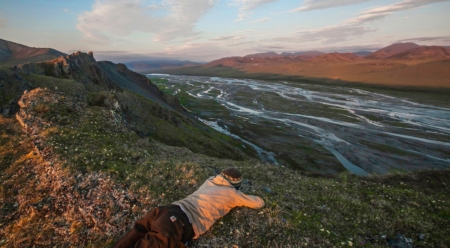An Adventurer Remembers When He First Fell for the Arctic
On a bouncy flight north over an eastern section of the Brooks Range, I press my cheek against the glass to get a better view down to the teeming mass of caribou moving through the valley directly beneath the plane. It’s a hot day just after the summer solstice. Slowly we spiral down to parallel a dry, overgrown channel of the Kongakut River, a couple of miles beyond the herd. The beefy tundra tires on our Cessna six-seater make contact, and we quickly come to a stop at the end of the strip marked with an old caribou shed. This will be our put-in for an 80-mile paddle to a remote reef on the edge of the Arctic Ocean.
Eleven days later, it’s just after midnight at our last camp before the sea. I’m surrounded by the immensity of Alaska’s Arctic Refuge coastal plain, walking solitarily in the orange light of an arctic summer night.
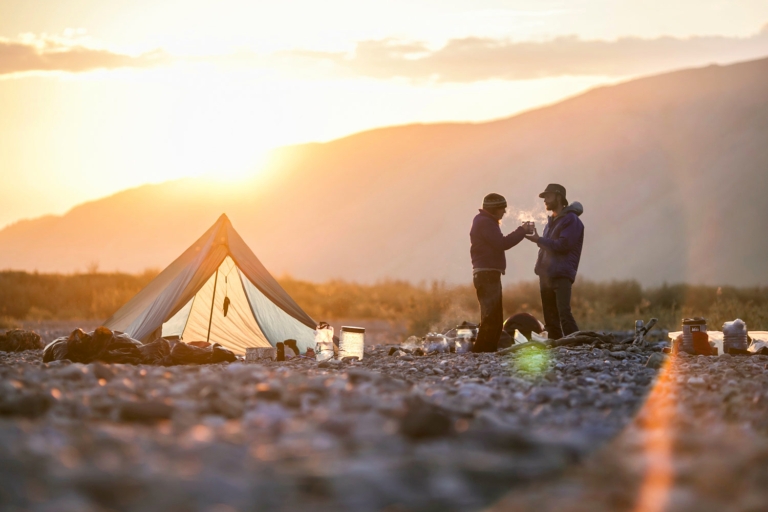
Hot tea at 1:05 a.m. a few days after summer solstice on the Kongakut River. Photo: Nathaniel Wilder
The tiny tribe of companions I am traveling with are asleep, dreaming of the adventures we’ve had, clearing the coffers for more. Our huddle of tents and deflated boats is braced against a stiff wind on the tundra—not like a fortress, but rather as a sail for our dream module. It’s my turn on bear watch, and I’ve wandered a bit far from our camp, turning occasionally with binoculars to check in. When I look back, I see the distant ridgelines of the Brooks Range rising from the flats to peaks like statues of ocean swells.
Before me, the sun gallops along the horizon, and the wind tries to push me south. I see ice in the distance. I’m mesmerized. I smell the Arctic Ocean for the first time. Bumps stand out from my skin as I step slowly, one slow step after another, listening, aware of my surroundings. Complete awe. These days are my first experience of deep wilderness in an arctic place.
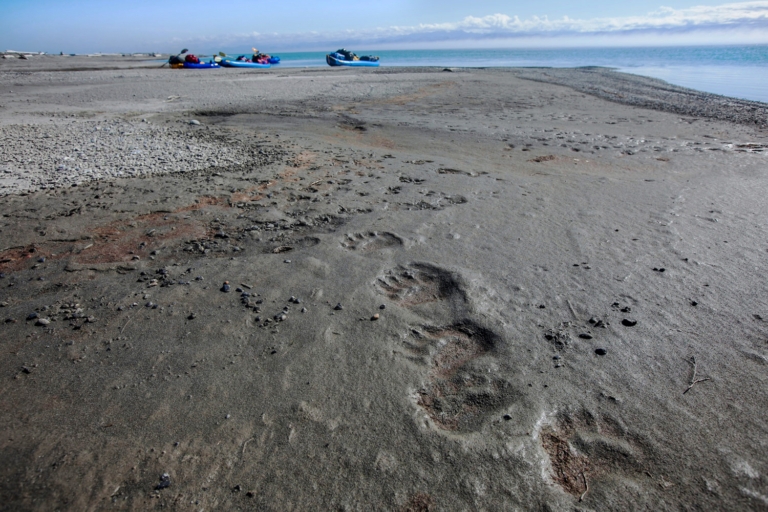
Polar bear tracks on Icy Reef, the gravel strip that buffers the Kongakut River’s terminus from the Arctic Ocean (Beaufort Sea section) and served as our landing strip to get back to civilization. Photo: Nathaniel Wilder
Movement. My legs buckle instinctively and I giddily drop to the soft, welcoming tundra to watch an arctic fox, unaware, as she trots, following a scent to a dead end. A meandering path through cotton grass unfolds. She changes her track to skirt me, leaving my sphere intact.
I watch a sandpiper for a while as he picks his way along a dry bed of pebbles. I look closely. Does he also take one slow step at a time?
A lone caribou grazes, moving east toward Canada. My camera clicks. This is the most profoundly I have ever felt wilderness—this light, these beings I’m witnessing. The moment gets compressed so deep down in my soul that it will emanate signals to guide the geographic coordinates of my photographic pursuits for years to come.
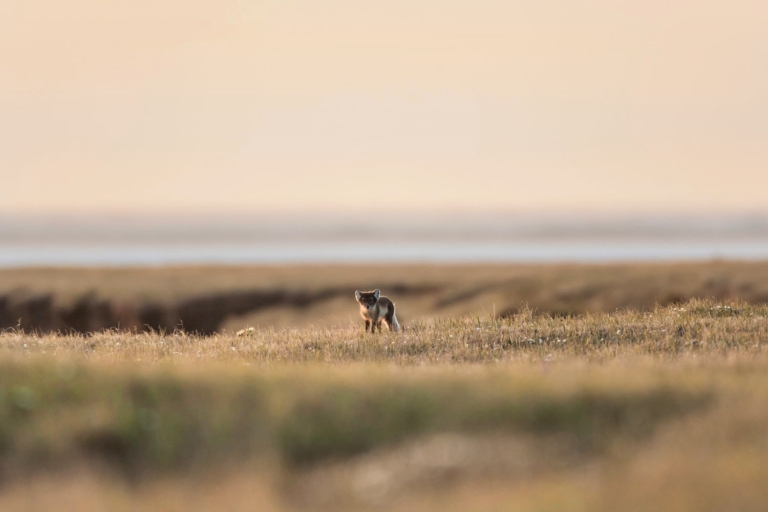
A curious arctic fox on the Arctic National Wildlife Refuge coastal plain. The Beaufort Sea is in the background. Photo: Nathaniel Wilder
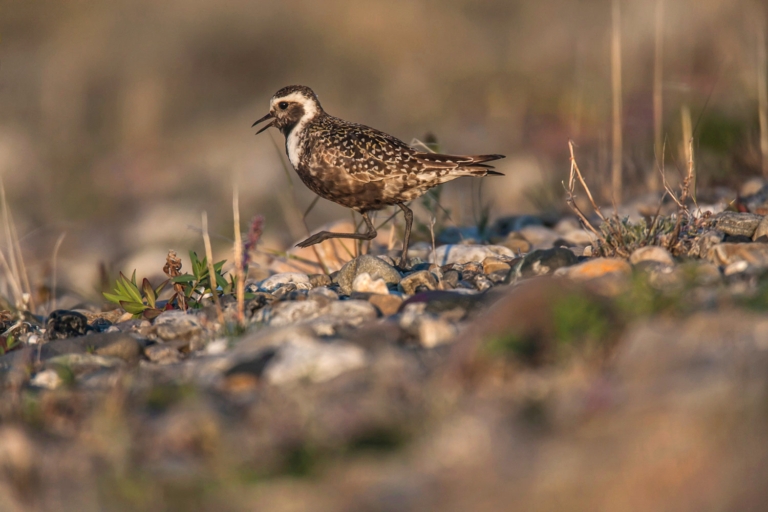
An American golden plover wanders through a gravel bed on the banks of the Kongakut River. Photo: Nathaniel Wilder
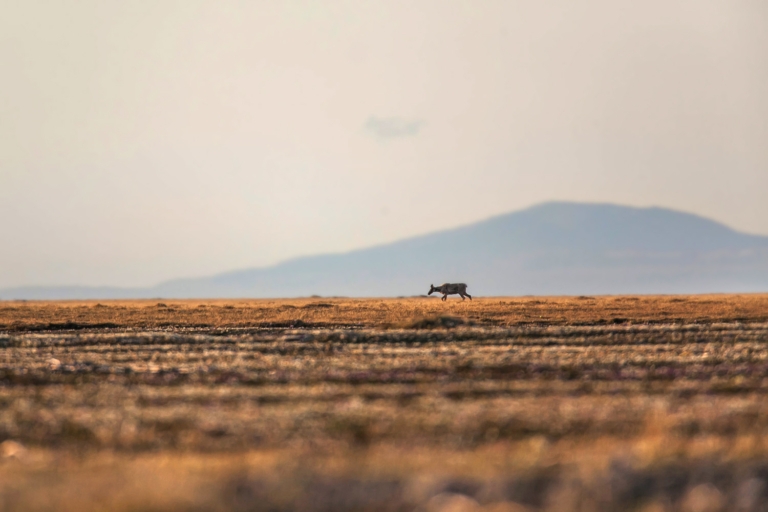
A lone caribou on the coastal plain. Photo: Nathaniel Wilder
In the morning we boat onwards, towards the sea, through this unique, wild space that (for now) everyone is invited to visit, but few may ever know.
Take Action!
Urge your senators to protect the coastal plain of the Arctic Refuge from oil drilling and industrial development. Together, we can help ensure the survival of the people and wildlife that call the Refuge home. Sign the Care2 petition.
The Refuge
For the last 30 years, the Gwich’in people of Alaska and northern Canada have been fighting proposed oil extraction projects in the Arctic National Wildlife Refuge—to them, its pristine coastal plain where the caribou calve their young is “the Sacred Place Where Life Begins.” Directed by Kahlil Hudson and Alex Jablonski, The Refuge tells the story of two Gwich’in women who are continuing the decades-long battle for their people’s survival—and the survival of the wild animals that so faithfully bring them life.
